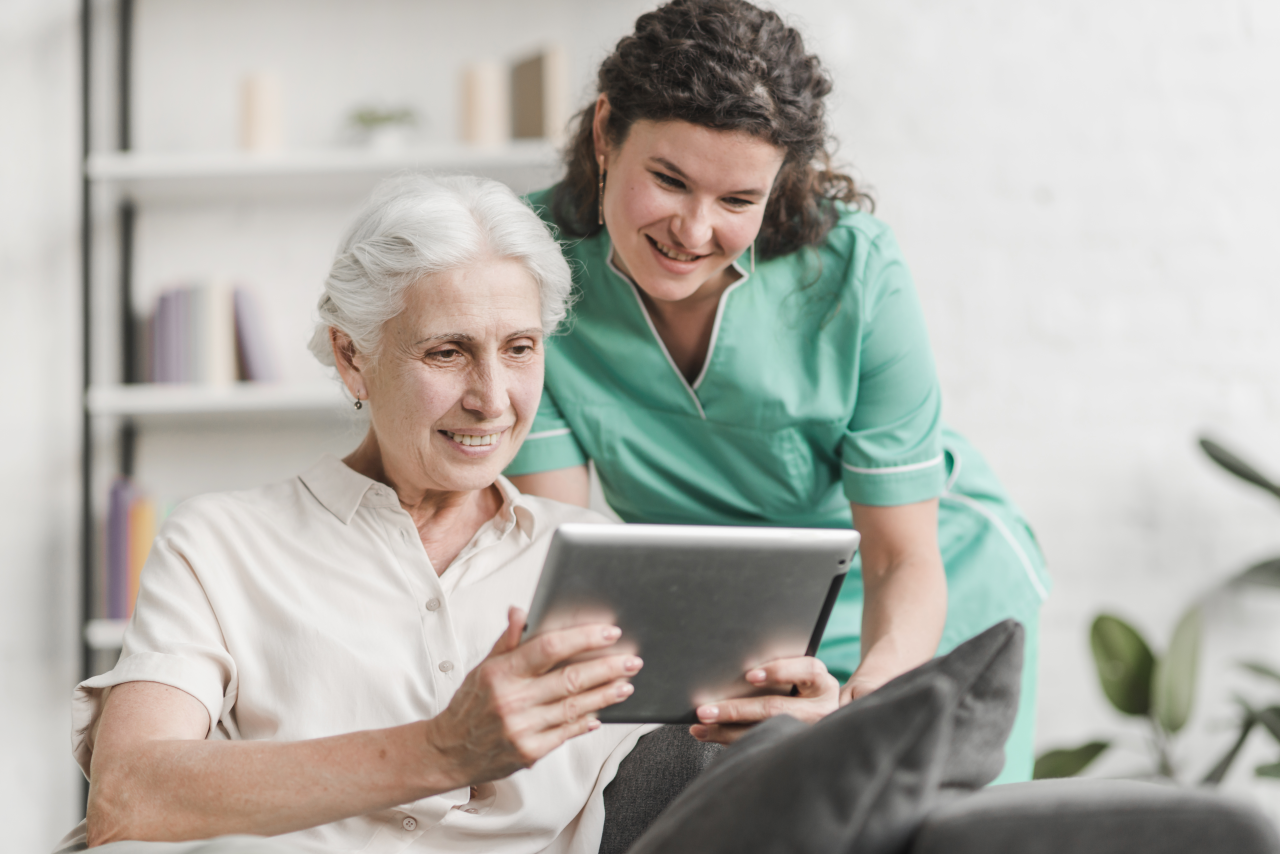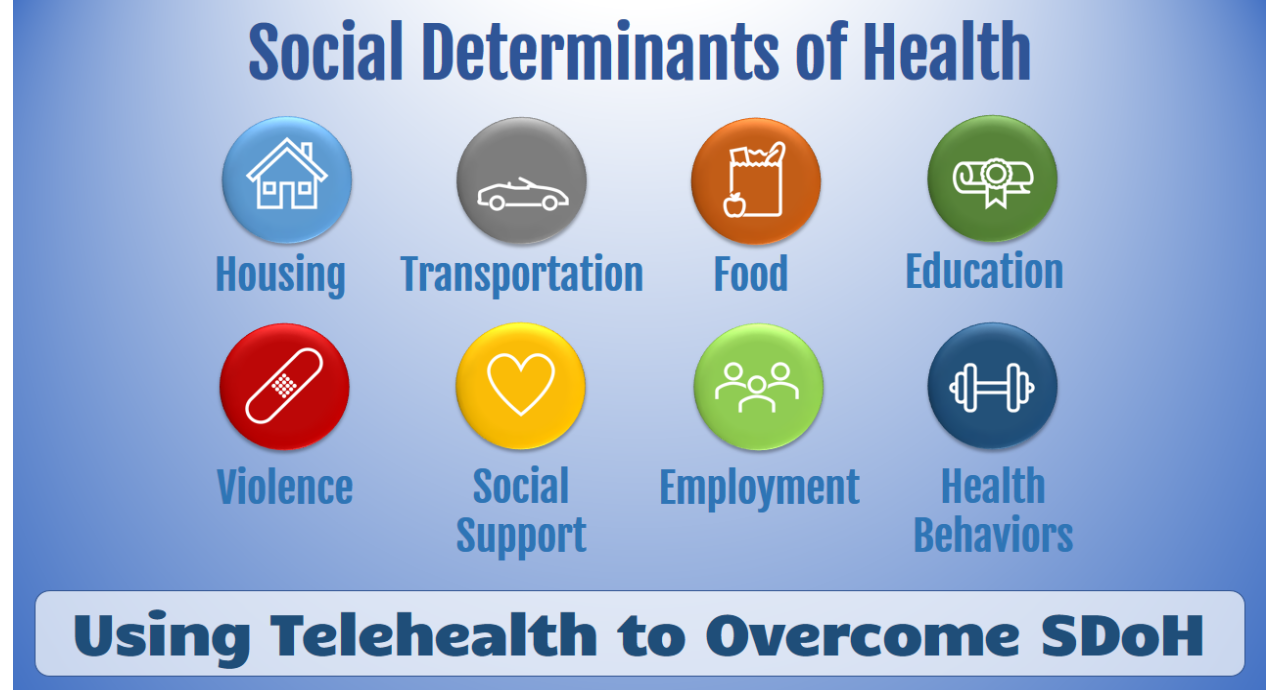Over the past decade healthcare researchers have recognized that a person’s health status is greatly affected by the physical environment and social conditions they find themselves in. Many of these factors are the result of a person’s lifestyle choices, educational level, employment status, and physical location. Synergistically, these factors can have a profound impact on an individual’s long term health.
The Covid-19 health crisis validated telehealth as a viable care delivery tool during a public health emergency that requires social distancing. But can telehealth also be used to diminish the effects of the Social Determinants of Health?
Social Determinants of Health
In a 2014 study, the Institute for Clinical Systems Improvement presented that 80 percent of a person’s health and well-being can be tied to:
- Socioeconomic Factors (40%) such as education, job status, family/social support, income and community safety.
- Physical Environment (10%) such as safe and affordable housing, open and recreational spaces, clean air and water, overall quality of life
- Health Behaviors (30%) – such as diet & exercise, tobacco use, alcohol use, or sexual activity
The American Hospital Association (AHA) presented 8 different social determinants that make up these 80%:
- Housing — is housing secure and safe?
- Food — is the community considered a food desert?
- Education — including cultural and technical competencies
- Transportation — is reliable travel to and from health care available?
- Violence — community and domestic
- Social Support — caregiver network
- Employment — job security and income
- Health Behaviors — nutrition, sleep, exercise, and drug/stimulant use
Using Virtual Care to Offset SDoH
As has been demonstrated and documented, properly designed virtual care services increase access to care for patients that might otherwise miss scheduled visits or choose to neglect symptoms. This was repeatedly shown throughout the Covid-19 public health emergency (PHE). Recent studies indicate that many chronic conditions have been exacerbated as a result of the patients’ inability to access timely care for issues that could have been prevented or diminished had there been consideration of the factors that impeded their care.
One of the many consequences of the PHE has been the recognition that many communities have been underserved during the pandemic with many patients missing or cancelling scheduled visits. As a result, leading healthcare organizations and physician practices have begun embracing population health management as an important strategy for maintaining and ultimately improving the health of the communities they serve. As part of that paradigm shift, awareness of SDoH is critical to achieving long-term positive health status. Telehealth is fast becoming the most efficient and effective means for identifying and managing current or potential health conditions.
Clinicians now routinely utilize video visits to assess their patients’ surroundings — e.g., is their home clean and safe, is there food in the fridge. Furthermore video visits can be used effectively to observe and supervise family caregivers ensuring that they are properly trained and supported to provide appropriate and timely care.



Here’s a typical telehealth visit scenario that also addresses SDoH:
Future Outlook
As reimbursement models evolve, specifically the move to value-based, outcomes driven reimbursement and away from fee-for-service, telehealth will become an increasingly critical tool for tracking and engaging patients with real-time interventions by providing ongoing care management and education. This effort is crucial if health systems, hospitals, clinicians, and payers are to ultimately bend the cost curve while improving both the patient experience and provider satisfaction.
Social determinants of health disproportionately impact underserved communities (seniors, minorities, children, handicapped). The consequences and impact, though, are felt throughout society from the cost of unnecessary or inappropriate visits to the ED or admissions to the hospital, missed or canceled visits, health screenings, lab tests, or follow-up visits resulting in diminished health outcomes.
Resolving SDoH requires a strategic approach along with a coordinated response from local governments, civic organizations, healthcare providers, payers, employers, schools, and consumers themselves. Through change management strategies, technology training, and financial incentives, communities are beginning the journey of reducing or eliminating many of these obstacles to health and wellness by providing their communities with programs and services designed to mitigate the effects of SDoH.








To receive articles like these in your Inbox every week, you can subscribe to Christian’s Telehealth Tuesday Newsletter.
Christian Milaster and his team optimize Telehealth Services for health systems and physician practices. Christian is the Founder and President of Ingenium Digital Health Advisors where he and his expert consortium partner with healthcare leaders to enable the delivery of extraordinary care.
Contact Christian by phone or text at 657-464-3648, via email, or video chat.







Leave A Comment